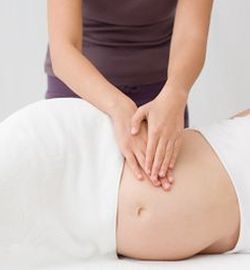Reflexology
Reflexology is a science which deals with the principle that there are reflex areas in the feet and hands which correspond to all of the glands, organs and parts of the body.
Stimulating these reflexes properly can help many health problems in a natural way, a type of preventative maintenance. It is used primarily for relaxing tension. Doctors agree that over 75% of our health problems can be linked to nervous stress and tension. Reflexology improves nerve and blood supply, and helps our body return to its natural state.
According to reflexology theory, the feet contain reflex points that correspond to specific bodily organs. Studies have shown that when a reflex area is addressed with reflexology techniques, there is increased blood flow in the region of the brain related to the body part the reflex corresponds to. By focusing the treatment on the body’s detoxification system (lymphatic system, lungs, kidneys, liver and colon) the increased circulation and lymphatic movement can help to hasten the release and removal of unwanted substances from these organs. As these metabolic wastes are flushed from the body, the recipient will generally find they have more energy and an improved sense of well-being.

Reflexology sessions are offered by three certified Reflexoloy therapists (Above from L to R): Mary Ann Maloney LMT, Misa McCue LMT, Nancie Yonker LMT
Reflexology Rates
60 Minutes – $105
90 Minutes – $135
Is Reflexology The Same As Foot Massage?
Shiatsu
Wear loose, comfortable clothing for this session.
Shiatsu (Japanese for “finger pressure”) originated in China around 530 BCE then migrated to Japan and then to the West. It is a form of acupressure massage that addresses the body, mind, and spirit. Shiatsu uses techniques such as jostling, rocking, compression, passive range of motion, stretching, and applying pressure on acupressure points. The treatment is done with the client fully clothed. Additionally, Shiatsu is known to boost the immune system, improve flexibility, and promote deep relaxation.




